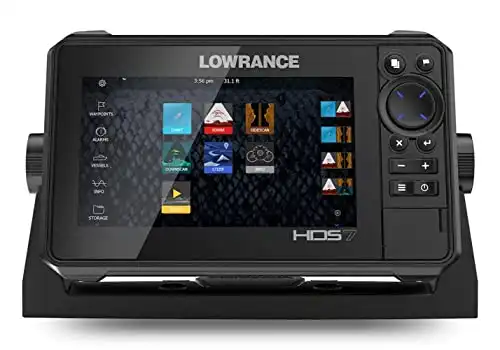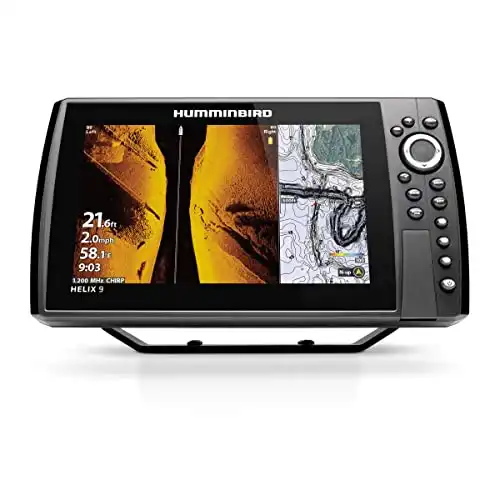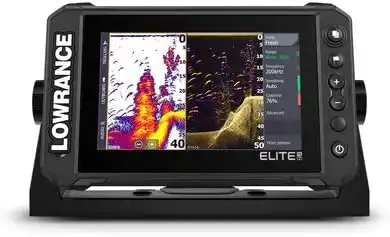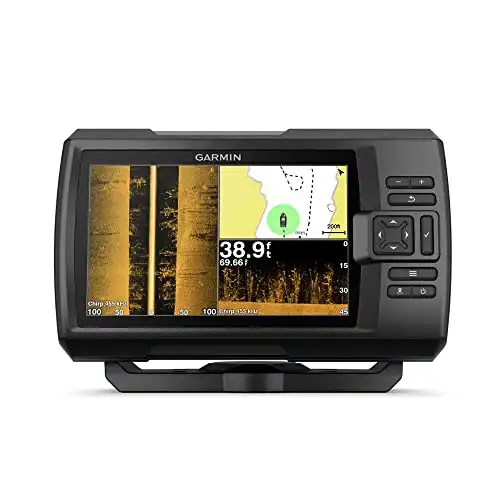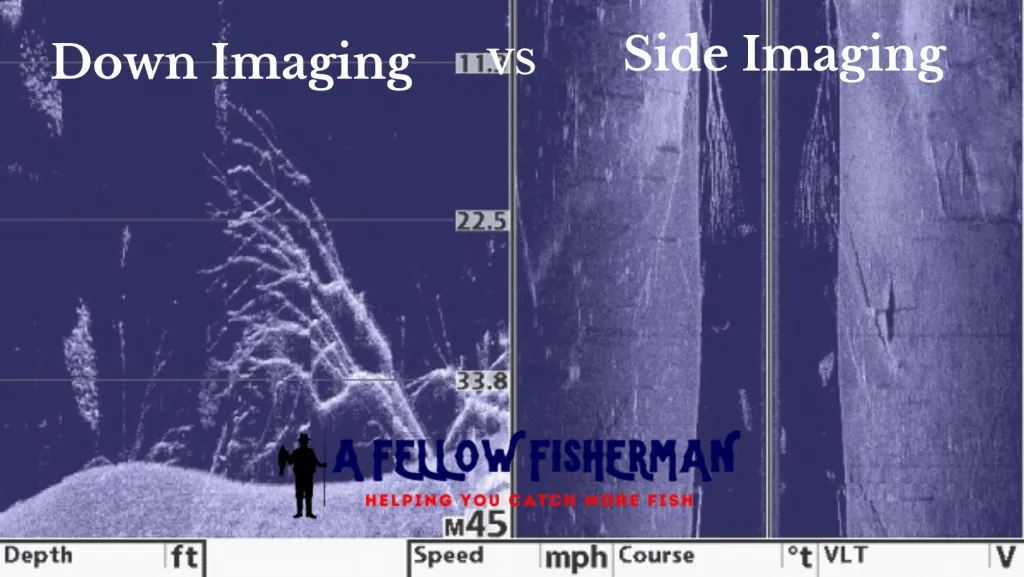
Side Imaging vs. Down Imaging?
Side Imaging and Down Imaging sonar are often debated at the dock, on forums, or perhaps at the local bar full of fishermen.
These two types of sonar are often debated for which one is better, but that is the wrong question. You are comparing apples to oranges and instead should ask which one I need or do I need both for my boat and fishing style.
They offer anglers a different perspective when looking for fish and structures beneath the surface. Both have their advantages and disadvantages, but which one is right for you? Let’s take a look at each one in more detail.
What is Side Imaging Sonar?

Side Imaging Fish Finders are a great way to quickly scan the water in front of you using trolling motors, but they may not be so good if your goal is locating smaller fish.
Side-scan sonar is an excellent choice for shallow water because they produce images well on both sides of your vessel. Side imaging sonar will help you identify ideal places to cast your line, such as tree stumps, drop-offs, structures, etc. They can be well utilized on a trolling motor at slower speeds, which you often hear of a side-scan being used.
What is Down Imaging Sonar?
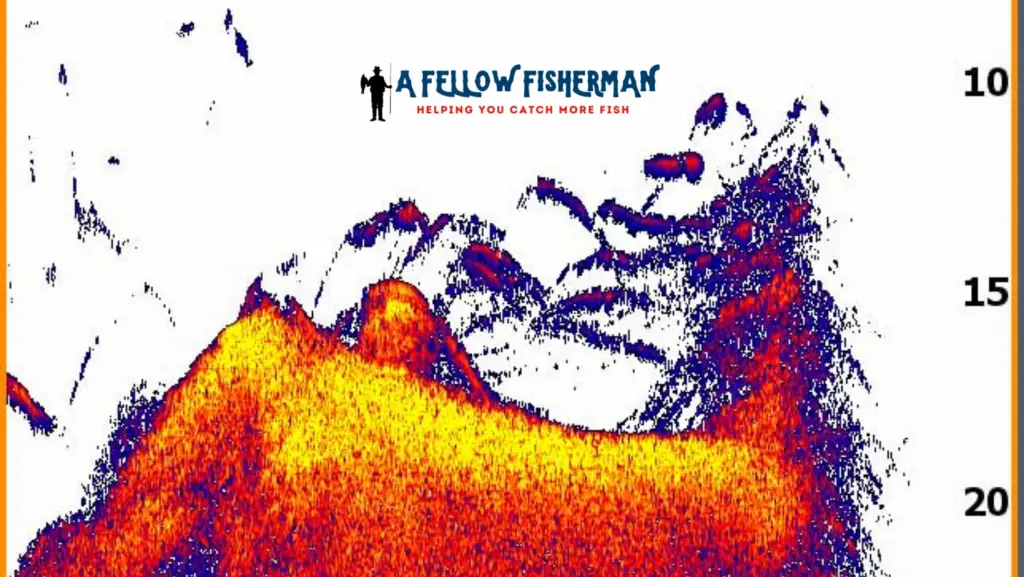
Conversely, down-imaging sonar is a great way to find small fish that might be holding tight to the bottom.
This type of sonar works best in deeper water because it produces images straight down from your vessel. So if you’re bottom fishing an artificial reef and seeking the structure or trying to find a nearby ledge where the flounder is hiding, down imaging sonar will help you locate these fish that might be suspended in the water column or holding tight to the bottom.
Down imaging sonar will also give you a better view of the bottom itself, which can help determine what type of structure is down there and whether or not it’s holding fish.
Down Imaging vs. Side Imaging
In a nutshell, side imaging scans beneath the water on both sides of the vessel, producing a bird’s eye view from the surface to the bottom. On the other hand, down imaging scans in cone shapes downward, creating images of the water column down to the surface.
So, which one is right for you?
The answer to this question depends on how you fish.
If you’re targeting specific structures or fish holding tight to the bottom, down-imaging sonar will better view and help you locate these fish more efficiently.
On the other hand, a side-imaging sonar is excellent for quickly scanning an area and can be especially helpful when trolling or moving through shallow water.
Both types of sonar have their advantages and disadvantages, so let’s take a closer look.
Side Imaging Advantages
- Helps you quickly scan an area
- Great for trolling or moving through shallow water
- Can be used to find specific structures
Side Imaging Disadvantages
- Not as good for finding small fish that are holding tight to the bottom
Down Imaging Advantages
- Gives you a better view of the bottom
- Helps you more easily locate fish that are holding tight to the bottom
- Can be used to find specific fish
Down Imaging Disadvantages
- Not as good for quickly scanning an area
Which is Better: Side Imaging or Down Imaging?
The easy answer to this question is, why not utilize both? But I know the budget is typically a factor, and you may need one or the other, so let’s break down some scenarios.
If you’re fishing in deeper water, down, imaging will give you a better view of the bottom and help you locate fish holding tight to the bottom more quickly. If you’re fishing in shallower water, side imaging will help you quickly scan the area and find specific structures.
Both types of sonar have their advantages and disadvantages, so it depends on your fishing style. However, if you can afford it, utilizing both types of sonar will give you the best of both worlds.
Do you have a preference for Side Imaging or Down Imaging? Let us know in the comments below. But first, let us answer some of the more frequently asked questions about side imaging vs. down imaging.
Frequently Asked Questions
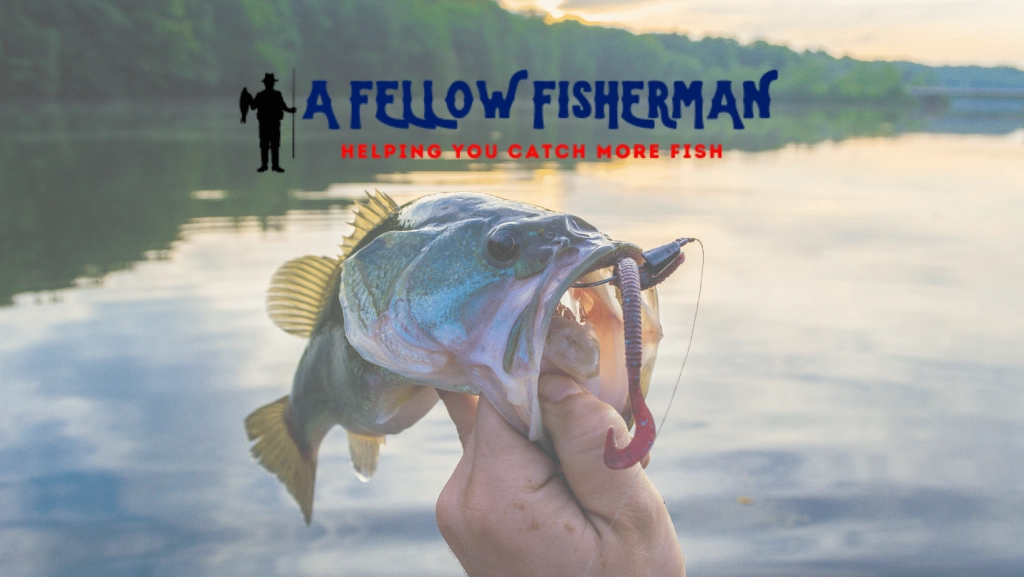
Down Imaging vs. Side Imaging For a Trolling Motor?
A side imaging fish finder is the ideal choice for trolling at a slow and steady pace. This type of sonar allows for clear views from both sides so that you know exactly where your bait is traveling in the water.
Down Imaging vs. Side Imaging for Kayak Fishing?
As we covered earlier, side imaging is the way to go and a necessary upgrade when fishing in shallow water. When fishing in a kayak, you can be in deep or shallow water, so the same rules apply here. If you have a trolling motor onboard your kayak, then refer to the answer above, but if you are bottom fishing a couple of miles offshore, you should opt for using a down scan sonar.
Down Imaging vs. Side Imaging in Shallow Water?
This one is easy, side imaging all the way. Fishing around docks, overhangs, or any structure side imaging will give you a much better view because it scans from both sides.
Down Imaging or Side Imaging in Deep Water?
Once again, a down scan takes the cake when fishing deep water. This type of sonar was designed for searching large areas of the water column quickly and efficiently. It will give you a clear view of the bottom to locate fish holding tight to the bottom.
Which Fish Finder Includes Side Imaging and Down Imaging?
A few different fish finders on the market include both side imaging and down imaging, but our top pick is the Humminbird Helix 9 SI GPS for side imaging. This fish finder has a large 9-inch display that is easy to read even in direct sunlight. It includes GPS mapping, side imaging, down imaging, and CHIRP sonar. It also has a built-in Ethernet port so that you can easily network it with other compatible devices.
The Helix 9 CHIRP is a fantastic combo and is worth every penny. You can seamlessly integrate your Minn Kota and Cannon products right into its interface and set speeds, directions, everything you’d need.
One of our favorite affordable options that include both types of sonar is the Lowrance HDS-7 Gen 3. This fish finder has a 7-inch display that is very easy to read. It includes down imaging, side imaging, CHIRP sonar, and StructureScan HD. It also has an Ethernet port so that you can easily network it with other compatible devices.
If you’re looking for the utmost in fish finding technology, look no further than the Lowrance HDS-Live.
If you’re looking for the best of the best with both down and side imaging, the Lowrance HDS-12 is our top pick. It has a large 12-inch display that is easy to read even in direct sunlight. It includes GPS mapping, side imaging, down imaging, and CHIRP sonar.
Does Side Imaging Work While Ice Fishing?
While ice fishing, it doesn’t make sense to use side-scan sonar. This type of sonar is meant for trolling or slow-moving boats and doesn’t work well when you’re stationary. Down scan imaging would be a better option because it will give you a clear view of the bottom and help you locate fish holding tight to the bottom.
Which Fish Finder Brand Has the Best Side Imaging?
I’d have to say Humminbird is unrivaled when looking at their MEGA side imaging output. Hummingbirds MEGA SI gives you incredible, high-resolution fish finder images that no other company has been able to match.
How Fast Can You Go While Using Down Imaging?
There is no speed limit when using down imaging, but you should keep your speed below five mph for the best results. This will allow the sonar signal to reach the bottom and give you a clear view of what’s down there.
What’s The Range of Down Imaging?
The range of down imaging depends on the model you have, but most down imaging units have a range of around 300 feet. This means that you can see down to approximately 300 feet.
Final Thoughts
When choosing the best fish finder for your needs, it’s essential to consider both down imaging and side imaging sonar. Down imaging is excellent for deep water fishing, while side imaging is perfect for shallow water fishing. Quite a few different fish finders on the market include both down imaging and side imaging. Below are some of our top picks worthy of checking out.

$1,449.99$1,296.09Shop on Amazon Shop on BluewaterThe Helix 9 CHIRP is a fantastic combo and is worth every penny. You can seamlessly integrate your Minn Kota and Cannon products right into its interface and set speeds, directions, everything you’d need.
04/02/2024 04:30 pm GMT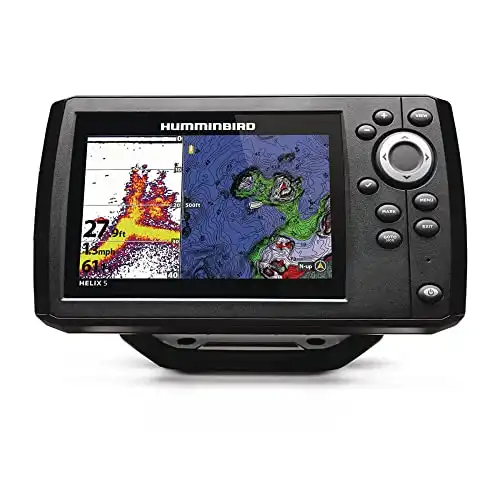
$319.99$301.13Shop on Amazon Shop on BluewaterWith a built-in base map, the Helix 5 is ready to fish as soon as you open the box.
04/03/2024 02:55 pm GMT
$329.00$184.76Shop on Amazon Shop on BluewaterThe Hook Reveal 5 is an excellent unit that lets you scan in both 3d and 2d to get down super deep. Get down to 1000 feet in 2d and 300 feet in 3d.
04/03/2024 03:22 pm GMT Shop on Amazon
Shop on AmazonThis is a unique product in the fish finding realm. Using technology similar to drones, this castable fish finder creates its own WiFi hotspot, allowing you to interface with the device using your cell phone or tablet.
For more guidance on choosing a fish finder, check out the pages below:

